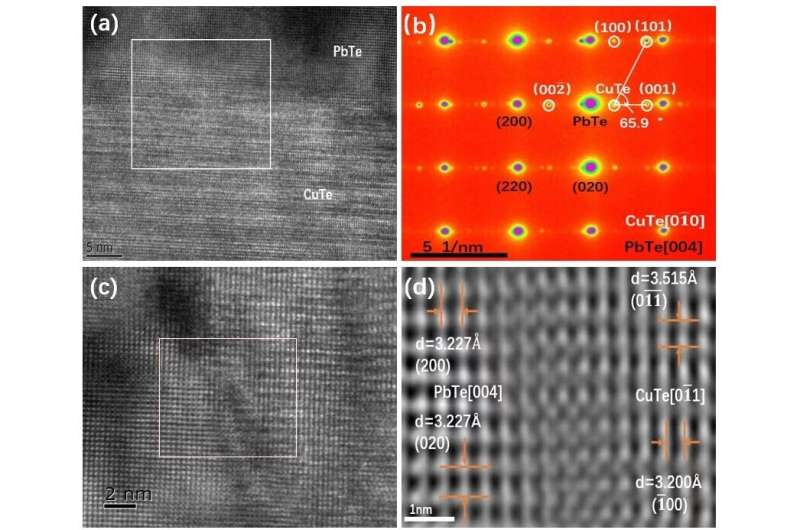Researchers optimize thermoelectric properties of lead telluride material systems

In a recent study, a research team from the Hefei Institutes of Physical Science of the Chinese Academy of Sciences achieved higher thermoelectric performance of n-type lead telluride (PbTe) by adjusting the band structure and enhancing phonon scattering. Results were published in Nanoscale.
"We have increased the material power factor and decreased thermal conductivity," said Prof. Qin Xiaoying, who led the team.
PbTe is one of the most promising medium-temperature thermoelectric materials. However, n-type PbTe materials have a lower thermoelectric figure of merit compared to p-type PbTe materials. This is mainly due to the large energy shift between the light and heavy bands in PbTe conduction band, which makes it difficult to achieve energy band simplification in n-type PbTe, resulting in a lower power factor. Therefore, more in-depth and systematic studies are needed to effectively and significantly improve the thermoelectric performance of n-type PbTe.
Now, the researchers constructed the Pb0.97Sb0.03Te + y wt. % Cu12Sb4S13(y=0,1.25,1.5,1.75) composite system. This was achieved by doping the PbTe matrix with antimony (Sb) elements and introducing a small amount of Cu12Sb4S13 nanoparticles. Thy also used the in-situ reaction to construct a semi-coherent nanophase.
This study focuses on optimizing the carrier concentration in n-type PbTe using host element doping, while combining energy band engineering/energy filtering effects to improve its electrical properties.
On this basis, in situ reactions were used to construct semi-coherent nanophases and introduce multi-scale defects to scatter phonons. This allowed them to improve the power factor, reduce thermal conductivity, and thus increase thermoelectric figure of merit (ZT).
They found that the composite sample Pb0.97Sb0.03Te + 1.5 wt. % Cu12Sb4S13 had excellent thermoelectric properties with a ZT of 1.58 (773 K), an improvement of about 75% compared with Pb0.97Sb0.03Te.
This work proved the incorporation of Cu12Sb4S13 nanoparticles was an effective way to improve the thermoelectric properties of Pb0.97Sb0.03Te, which was of great importance for the study of the regulation of the thermoelectric properties of n-type PbTe.
More information: Wei Wu et al, Achieving higher thermoelectric performance of n-type PbTe by adjusting band structure and enhanced phonons scattering, Nanoscale (2022). DOI: 10.1039/D2NR04419F
Journal information: Nanoscale
Provided by Chinese Academy of Sciences





















